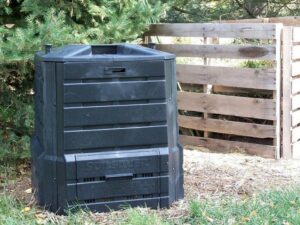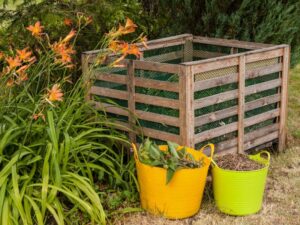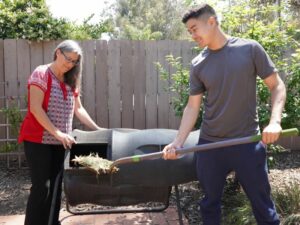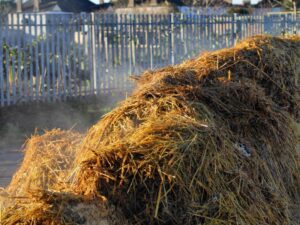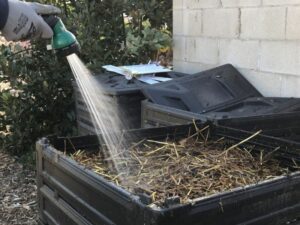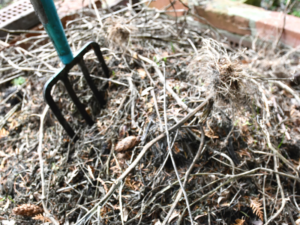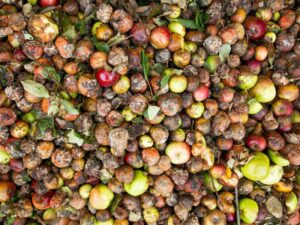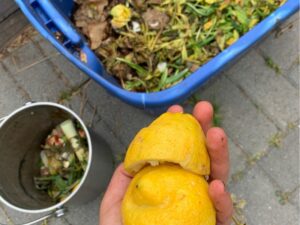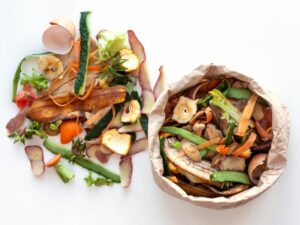Traditional compost
Composting & Soil Resources in the Unincorporated San Diego County Area
Are you looking for home composting resources in the San Diego area? Solana Center carries many supplies for pick up from our center in Encinitas. Visit our online store to purchase supplies or view the complete list of locations that sell composting products in unincorporated San Diego.
Read MoreConstruya Su Propio Recipiente de Malla
El recipiente de malla galvanizada es una solución económica para el abono. Se puede construir por menos de $20 y es fácil para mantener. Para mezclar el abono, simplemente deshaga el recipiente y muévalo al lado del material; luego vierta el abono en el recipiente en su nuevo lugar. Materiales Necesarios 10 pies de media…
Read MoreHome Composting Resources in the San Diego Area
Are you looking for home composting resources in the San Diego area? Solana Center carries many supplies for pick up from our center in Encinitas. Visit our online store to purchase supplies or view the complete list of locations that sell composting products in the City of San Diego.
Read MoreDIY: Build Your Own Backyard Compost Bin
Stackable Wooden Compost Bin The stackable wooden compost bin requires minimal carpentry skills to build. The cost depends largely on the quality of materials used, but you can expect it to cost around $50 when using cedar planks. Materials can also be obtained for free by scavenging wood from old fencing. The wooden compost bin…
Read More5 Ways to Heat Up Your Compost Pile
Want to get finished compost faster? You may want to try increasing the internal temperature of your backyard bin! Contrary to popular belief, compost piles do not heat up or drop in temperature due to atmospheric conditions (i.e. sun exposure, warm weather or cold weather) but rather, as a result of heat generation by specialized…
Read MoreHow can I reduce the amount of water I use when composting?
Water conservation is an important concern for all homeowners and gardeners in California these days, especially in Southern California as it gets into the warmer summer months. Using compost in your yard and garden helps to reduce the amount of watering that your plants need by improving soil structure and, thus, the soil’s ability to retain…
Read MoreHow to improve aeration in your backyard compost bin
An ample supply of oxygen is key to the success of your backyard compost bin. Decomposer microbes need oxygen for their metabolic functions to operate efficiently. Without access to oxygen, some microbes die and others switch to a different form of metabolism, anaerobic (without air) respiration. This has a few negative consequences: Instead of the…
Read More5 Creative Ways to Source Materials for your Compost Pile
Sometimes when we want to build a compost pile, we either have a disproportionate amount of greens or browns or, don’t have enough material. What to do? Here are a few ideas to help augment your composting materials: Waste diversion is more fun with friends! Post on a community bulletin board such as Nextdoor or a community…
Read MoreRotline: How often do I turn my compost pile?
Rotline Question: How often do I turn my compost pile? Answer: We love this question, mainly because the answer is so incredibly forgiving. How often you turn your compost depends on what you are planning to do with it. For example, will you be feeding your house plants once in a while or amending the soil in your six…
Read More3 Composting Myths Debunked
Composting is a rewarding practice for so many reasons. It allows you to prevent waste by creating healthy soil, provides organic material to help store more water in the ground, and can even benefit your wallet by decreasing the need for frequent trash pickup. But we’ll be the first to admit that getting started with composting can be intimidating – especially…
Read More
